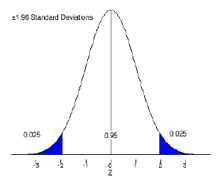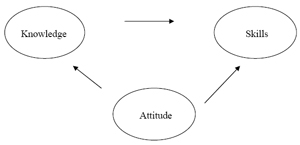|
Modeling After Your
Positive Deviants
A Quick and Simple Template for Personal and
Organizational Transformation
by Zainal Abidin Rahman B Sc, ACCA, MA
“You must be out of your mind!” my client said when I
suggested she cultivates and learns from the positive
deviants in her organization. Deviants? Positive
deviants? Isn’t that word an oxymoron? The CEO obviously
didn’t like the word. I had some explanation to do.
Back to Vietnam in the 1990s
My work in Solution Focus coaching brought me to the
concept of positive deviance. It started innocently
enough. In the 1990s, the Vietnamese government invited
Jerry Sternin, Director of Save the Children, a
Non-profit Organization, to study malnutrition among
Vietnamese children. In all the villages he visited,
Sternin found starving children. As an “expert”, it was
easy enough to suggest the usual external solutions in
the form of aids from foreign governments. But that
would be a temporary solution and would do nothing to
make the villagers self-sufficient.
Sternin further saw that among the hundreds and
thousands of starving children in each village, there
was a handful of children who were well fed and
thriving. He traced these healthy children to their
mothers and found that these mothers behaved differently
from the typical village mothers. These mothers were
going out every day to the paddy fields and collecting
tiny shrimps and crabs which they added, along with
sweet potato shoots, to their children’s meals. They
also fed their children three or four times a day rather
than the typical twice a day. These mothers were the
original positive deviants - they obtained outstanding
results for their children’s health despite facing
similar problems as the other mothers (and also mainly
because they ignored conventional village wisdom that
the foods were inappropriate for young children).
Rolling out
Sternin organized a program to teach the feeding habits
of these positive deviant mothers to other village
mothers. Within two years, 80% of the families
participating in the project no longer had malnourished
children. More importantly, they achieved this feat
entirely by using resources already available in the
villages. Since then, this model for looking out for
positive deviants within the community itself to solve
prevalent problems has been rolled out in many countries
(Bangladesh, Bhutan, Mali, Indonesia, etc) across
several social issues (Aids infection, trafficking of
young girls for prostitution, overcoming the village
sorcerer’s spell, ethnic conflict, etc).
Unique advantages
This model has three unique advantages over traditional
approaches that try to impose solutions from outside:
1. Progress is made rapidly without requiring detailed
analysis or outside resources;
2 The resulting benefits can be sustained since the
solution to the problem has been proven to work within
the community;
3. The model can be broadly applied since positive
deviants exist in virtually every community or social
issue.
What about business organizations then?
Sure organizations too can use positive deviants to
spearhead changes according to Richard Pascale and Jerry
Sternin in their HBR article (“Your Company’s Secret
Change Agents”) of May 2005. They devised a 6 - step
positive deviance model as follows:
Step 1: Make the group the guru
Step 2: Reframe through facts
Step 3: Make it safe to learn
Step 4: Make the problem concrete
Step 5: Leverage social proof
Step 6: Confound the immune defense response
Actually, the approach of learning the skills of a
positive deviant and then teaching them to others isn’t
exactly a recent phenomenon. In early 1970s, Richard
Bandler and John Grinder studied the skills of Milton
Erickson, Virginia Satir and Fritz Perls, all change
agents extraordinaire themselves, and taught the skills
to others. Unknown to them at the time, they spun a
whole new industry called Neuro Linguistic Programming.
The process of learning the skills was called modeling;
the positive deviants were called exemplars. Bandler’s
and Grinder’s approach is, however, pitched at the
individual and seldom, if ever, works at the
organizational level. Subsequent refinements by William
Seidman, involving the use of coaching using computer
software, has enabled organizational transformation to
be highly effective and predictable.
Adapting from NLP and the works of Seidman, I have come
up with a 3 step process which can virtually predict
organizational transformation in any domain of choice.
Briefly, the steps are:
1. Identifying the Positive Deviants (PDs)

In domains such as sales, everyone in the organizations
knows who the superstars are. They are the ones who
bring in twice, five or even 20 times the income of the
average salesperson. They are at the extreme positive
end of the normal curve. In other, less quantitative,
domains (e.g. engineering maintenance, accounting, HR,),
identifying the PDs may not be so obvious. Their
performances are usually affected and complicated by
affinity issues. They may, however, generally be
identified by asking 2 simple questions of the key
workforce:
1. Within that domain, who are the most respected
persons inside this organization?
2. Of those who are respected, which one will you call
and will do whatever they tell you to do because you
trust them?
Trust is an important factor because of the credibility
factor – “If you can succeed, I too can succeed if I
just know how.”
Getting the PDs to cooperate to reveal their winning
formula depends on many factors; most of which are
within the influence or control of management. The
important thing is to assure them that they will not
lose out in this project.
2. Harvesting the PD’s “winning formula”
Seidman calls the special set of skills which enable the
PDs to function at their high level as their “secret
sauce.” I prefer to call it simply as the “winning
formula” or “winning recipe.” This formula resides in
the interplay of the PDs’ domains of knowledge, skills
and attitude.

While a PD, say in sales, may be able to tell you the
secrets of his super ability to create high volumes of
sales, much of the formula is actually operational at
the unconscious competence level. What they consciously
know is but a tiny fraction of their real winning
formula. It would take a coach skilled in NLP deep
probing questioning techniques (especially Roger
Bailey’s Language and Behavior Profile) to bring
components of the unconscious competence to awareness.
The interview could last 6 – 10 hours. The elicitations
of inner motivational and other strategies as frequently
taught in NLP trainings are also needed but are
inadequate by themselves.
Studies have shown that PDs of whatever domains have one
common universal component in their winning formula and
that is they are all driven by a higher social or moral
imperative. What most people inadequately describe as
“passion”. The moralistic story of the man who is
“building a cathedral” as opposed to the one who’s just
laying bricks or building a wall has much validity
Knowledge Attitude Skills after all! Other components of
the formula include the way they categorize their field,
point and mode of action, estimation and response to
risk factors, etc. At the end of the interview, we will
have a good picture and feel of the winning formula that
make the PDs fly at their stratospheric heights. We are
now ready for the next step.
3. Transferring the PD’s “winning formula” to the
rest of the workforce
What we have at this stage is knowledge of the PDs’
formula. Like all other knowledge, it has value only
when it is used by the wannabes or shall we call them
DPDs (Developing Positive Deviants).
There are three crucial sub-steps in ensuring DPDs will
ultimately become PDs.
a. Initial engagement
Because of the credibility of the PDs, there is an
immediate change in mindset and behavior of DPDs on
first exposure to the formula. Seidman estimates that
the change happens within 8 minutes of exposure. The
roadmap to PDhood and abundance is now laid bare before
DPDs for their easy picking! However, this initial burst
of excitement is commonly short-lived and is replaced by
a lethargic feeling of “been there; done that” unless
quickly followed up by the next 2 sub-steps. They are
absolutely critical in making the transformation
complete and predictable.
b. Subsequent Reinforcement
Crucial aspects of the formula that’s relevant to a
particular DPD need to be reinforced. And the
reinforcement can only be done by the DPD himself or
herself - for a period of at least 3 weeks. The
reinforcement takes only 5 minutes each day but is
absolutely essential. A pre- scheduled call to a
personal coach is helpful.
To further add to their drive, at this stage I usually
expose the DPDs to their Enneagram style. The enneagram
is a personality profile which I find particularly
useful as it explains people’s behaviors as well as
their underlying motivations and values. It charts where
the DPD currently is and where he wants to be as part of
a holistic package of personal growth and development
strategies. Most people not only want to be PDs in their
chosen domain, but also a good parent, husband, wife,
son, daughter, etc. When the specific changes to
becoming a PD is seen in the context of a raft of
strategies toward becoming a better and more wholesome
person, the DPDs begin to get in touch with the deeper
emotional meanings of those specific changes. Self-
motivation shoots up.
c. Management commitment:
Top management commitment is crucial. Too many change
initiatives take place where management gives the
go-ahead only to move on to other “more important”
matters, leaving the change initiatives to lower levels.
As soon as staff detect top management has shifted its
attention, the expected changes pretty soon get aborted.
Management commitment is required in the form of almost
daily management interaction with DPDs on four basic
issues:
i. What are you now doing against the development plan?
ii. What will you be doing next week?
iii. Are you in or out of alignment with your plan?
iv. How can I help?
Advantage
As mentioned earlier, the big advantage of modeling the
organization’s positive deviants to effect changes is
that the changes can happen rapidly and are sustainable.
The positive deviants have shown that performance at a
much higher level is doable in the context and
circumstances of the organization. That’s a testimony no
new externally imposed solution can claim.
References:
• The Power of Positive Deviancy Jerry Sternin & Robert
Choo
HBR Jan-Feb 2000
• Your Company’s Secret Change Agents – Richard Pascale
& Jerry Sternin HBR May 2005
• Words That Change Minds – Shelle Rose Charvet
• www.cerebyte.com.
Zainal is a business trainer and coach specializing in
personal and organizational change. He has worked with
thousands of clients, individuals and corporate, and
brings with him expertise in OD, HR, NLP, ericksonian
hypnosis, Solutions Focus, Appreciative Inquiry, The
Enneagram, energy psychology and various other effective
modalities that create change at the personal and
corporate levels. Contact:
zainal@competencestrategies.com.sg.
|
Zainal is a
business trainer and coach specializing in
personal and organizational change. He has
worked with thousands of clients, individuals
and corporate, and brings with him expertise in
OD, HR, NLP, ericksonian hypnosis, Solutions
Focus, Appreciative Inquiry, The Enneagram,
energy psychology and various other effective
modalities that create change at the personal
and corporate levels. Contact:
zainal@competencestrategies.com.sg. |
For reprint permission, please email
zainal@competencestrategies.com.sg.
[ top ]
|